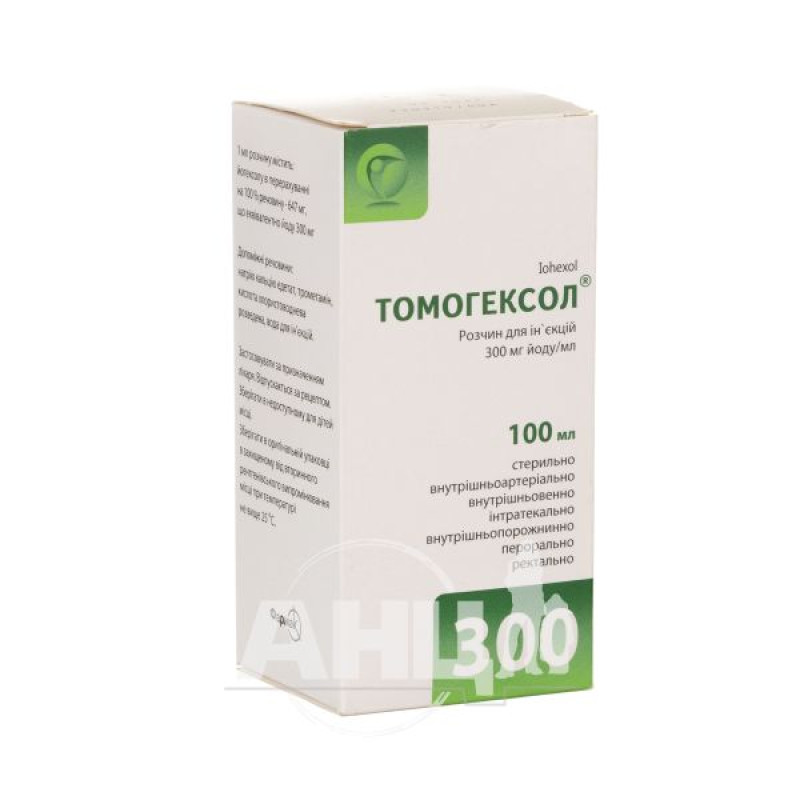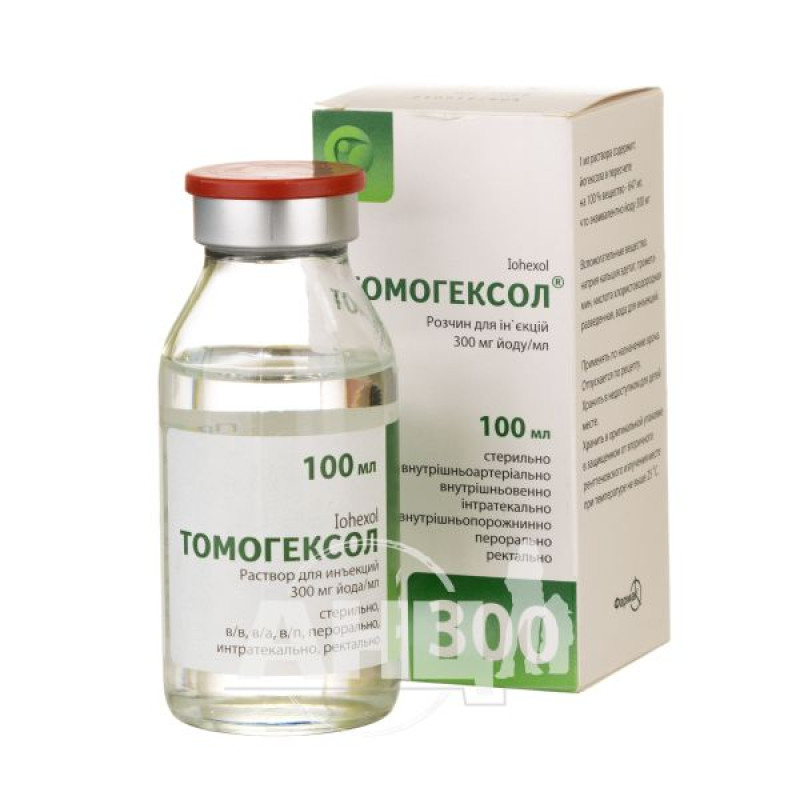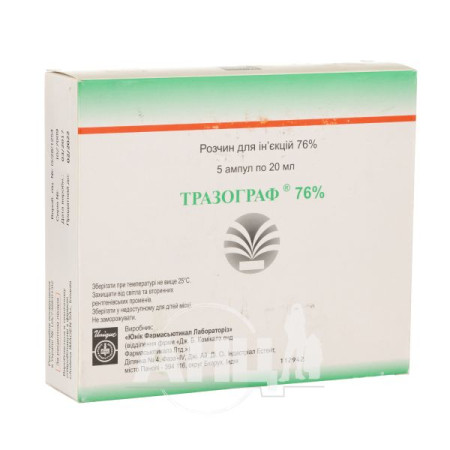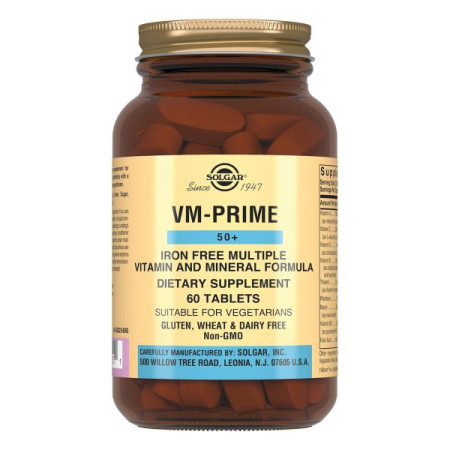Tomohexol solution for injection 300 mg iodine/ml bottle 100 ml No. 1

Tomohexol injection solution is intended for diagnostic testing only.
Radiocontrast agent for arthrography, angiography, arteriography, urography, phlebography and contrast enhancement in computed tomography (CT), lumbar, thoracic and cervical myelography, CT cisternography, hysterosalpingography, sialography, endoscopic retrograde pancreatography (ERPG), endoscopic retrograde cholangiopancreatography (ERCP), herniography and gastrointestinal studies in children and adults.
Composition
Active ingredient: iohexol;
1 ml of solution contains iohexol in terms of 100% substance, which is equivalent to iodine: 300 mg iodine / ml and 647 mg iohexol / ml.
Contraindication
Hypersensitivity to the active substance or to other components of the drug.
Severe thyrotoxicosis.
Method of application
The dose of the drug depends on the method of examination, age, body weight, cardiac output, general condition of the patient and the technique of administration of the drug. Usually the same concentration and volume of iodine is used as for other iodine-containing X-ray contrast agents. Before and after the use of the contrast agent, as with other X-ray contrast agents, it is necessary to ensure adequate hydration of the body.
The drug is intended for intraarterial, intravenous, intrathecal, intracavitary administration, oral administration, and rectal administration in adults and children.
Application features
Pregnant women
If possible, radiation should be avoided during pregnancy, and it is necessary to carefully consider the appointment of an X-ray examination, with or without a contrast agent, due to the possible risk.
Children
The drug can be used in pediatric practice.
Drivers
No studies on the effect of the drug on the ability to drive and use machines have been conducted. It is not recommended to drive or use complex machinery during the first 24 hours after intrathecal administration of contrast media. If symptoms occur after myelography, the decision should be made individually.
Overdose
Preclinical data indicate a wide therapeutic window for iohexol and no upper limit of standard doses for intravascular administration. The risk of overdose symptoms is minimal if the patient is not given more than 2000 mg/kg of iodine in a short time. Prolonged use of high doses of the drug may affect renal function (half-life is 2 hours). Accidental overdose of the drug is possible during complex angiographic procedures in children, especially if high doses are administered repeatedly.
In case of overdose, it is necessary to correct water and electrolyte imbalance. Kidney function should be monitored for the next 3 days. If necessary, hemodialysis should be used to remove excess drug. There is no specific antidote.
Side effects
On the part of the immune system: hypersensitivity reactions (including shortness of breath, rash, erythema, urticaria, itching, skin reactions, vasculitis, angioedema, laryngeal edema, laryngospasm, bronchospasm or non-cardiogenic pulmonary edema may develop either immediately after administration of the drug or after a few days), anaphylactic / anaphylactoid reactions, anaphylactic / anaphylactoid shock. On the part of the nervous system: headache, dysgeusia (temporary metallic taste), vasovagal loss of consciousness. On the part of the cardiovascular system: bradycardia, hypertension, hypotension. On the part of the digestive system: nausea, vomiting, diarrhea, pain / discomfort in the epigastric region, increased salivary gland size. General disorders: feeling hot, pyrexia, shivering (chills). Injuries, poisonings and procedural complications: iodism.Interaction
The use of iodinated contrast agents in diabetic patients taking metformin may lead to reversible renal dysfunction and lactic acidosis (see section "Special warnings and precautions for use").
Patients who took interleukin-2 less than 2 weeks before the study are prone to late adverse reactions (flu-like symptoms or skin reactions).
All iodinated contrast agents can interact with diagnostic tests for thyroid function, so the ability of the thyroid gland to bind iodine may be reduced for up to several weeks.
High concentrations of contrast agents in serum and urine may affect laboratory results for bilirubin, proteins, and inorganic compounds (e.g., iron, copper, calcium, phosphates), so laboratory tests should not be performed on the same day.
Treatment with beta-blockers may lower the threshold for hypersensitivity reactions, and higher doses of beta-agonists may be required to treat hypersensitivity reactions. Beta-blockers, vasoactive agents, ACE inhibitors, angiotensin receptor antagonists may reduce the effectiveness of cardiovascular mechanisms to compensate for changes in blood pressure. Concomitant use of some neuroleptics or tricyclic antidepressants may lower the seizure threshold and thus increase the risk of contrast-induced seizures.
Store in the original packaging in a place protected from secondary X-ray radiation at a temperature not exceeding 25ºС.
Keep out of reach of children.
Shelf life - 3 years.
There are no reviews for this product.
There are no reviews for this product, be the first to leave your review.
No questions about this product, be the first and ask your question.












